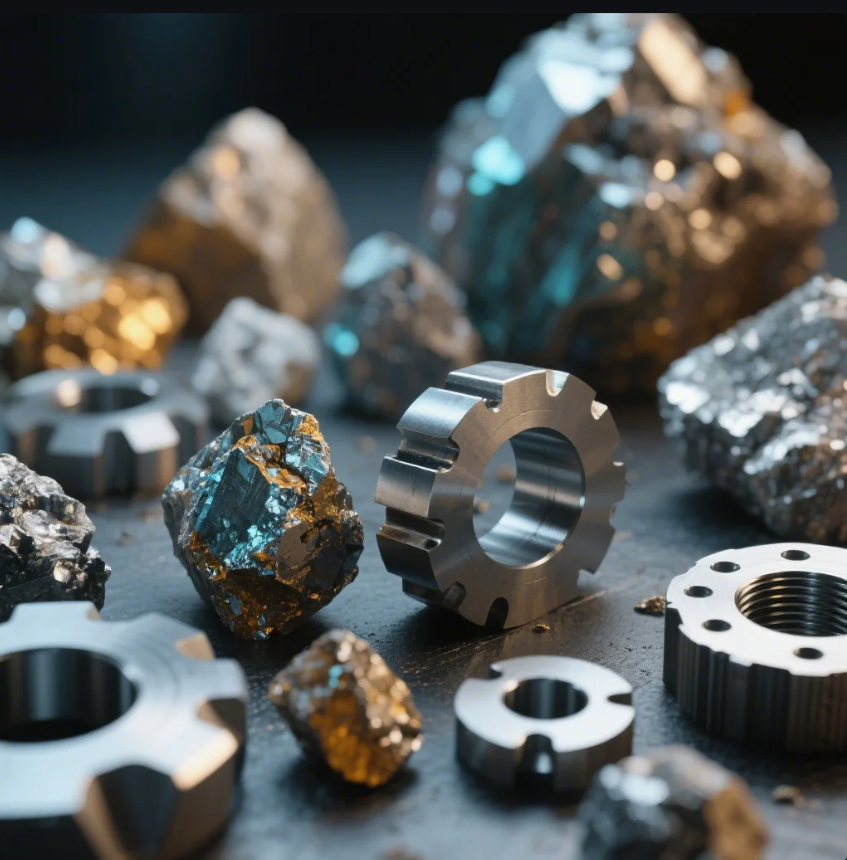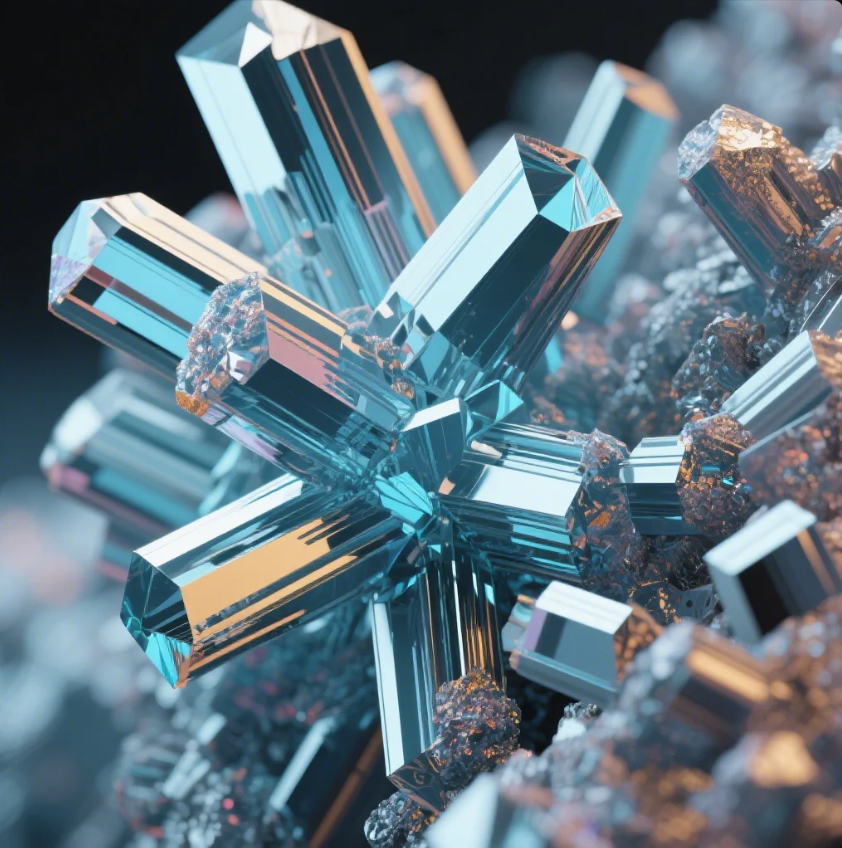What are the 7 key minerals?

Minerals are essential components of the Earth's crust, and understanding their characteristics is key to identifying them and using them in various applications. In this article, we will discuss the 7 key minerals that play a significant role in geology, industry, and daily life.
Snippet paragraph: Discover the seven key minerals that are crucial in various industries and how their properties make them valuable.
Transition paragraph: Let’s explore these seven essential minerals and how they contribute to different sectors and geological processes.
What are the 7 major minerals?
The seven major minerals that are vital for human health and the environment include calcium, potassium, magnesium, sodium, iron, zinc, and phosphorus. Each of these minerals plays an important role in biological functions and the proper functioning of the human body.
Snippet paragraph: Learn about the seven major minerals—calcium, potassium, magnesium, sodium, iron, zinc, and phosphorus—and their vital roles in the human body.

Dive-Deeper paragraph: Calcium is crucial for building and maintaining strong bones and teeth. It also plays a key role in muscle function and nerve transmission. Potassium helps maintain fluid balance, nerve function, and muscle contractions. Magnesium supports over 300 biochemical reactions in the body, including energy production and protein synthesis. Sodium is vital for regulating blood pressure and fluid balance.
Iron is essential for carrying oxygen through the bloodstream as part of hemoglobin. Zinc is involved in enzyme functions and immune system support, and phosphorus plays a role in cell function, DNA synthesis, and bone health. These minerals are found in a variety of foods and are essential for maintaining good health.
Table: The 7 Major Minerals for Human Health
| Mineral | Function | Source |
|---|---|---|
| Calcium | Bone health, nerve function, muscle contraction | Dairy products, leafy greens |
| Potassium | Fluid balance, muscle contractions | Bananas, potatoes, spinach |
| Magnesium | Energy production, enzyme function | Nuts, seeds, whole grains |
| Sodium | Fluid balance, blood pressure regulation | Salt, processed foods |
| Iron | Oxygen transport in blood | Red meat, spinach, beans |
| Zinc | Immune system support, enzyme functions | Meat, shellfish, legumes |
| Phosphorus | Bone health, energy production | Meat, dairy, nuts, beans |
What are the 7 major classes of minerals?
Minerals can be classified into seven major groups based on their chemical composition: silicates, carbonates, oxides, sulfides, halides, phosphates, and native elements. These groups are key to understanding how minerals form and how they are used in various industries.
Snippet paragraph: Discover the seven major classes of minerals: silicates, carbonates, oxides, sulfides, halides, phosphates, and native elements.

Dive-Deeper paragraph: The first major class, silicates, includes minerals like quartz and feldspar. These minerals contain silicon and oxygen and make up most of the Earth’s crust. Carbonates, such as calcite, contain carbonate ions and are commonly found in sedimentary rocks. They are important for the construction and cement industries.
Oxides, like hematite and magnetite, are minerals composed of oxygen and metals and are significant as ore sources. Sulfides, such as pyrite, contain sulfur and are also crucial in metal extraction. Halides, including halite (rock salt), contain halogen elements like chlorine or fluorine and are used in chemical industries. Phosphates, such as apatite, are essential for plant nutrition and are used in fertilizers. Finally, native elements like gold and copper consist of a single element and are prized in electronics and jewelry.
Table: Seven Major Classes of Minerals
| Class | Example | Chemical Composition | Uses |
|---|---|---|---|
| Silicates | Quartz, Feldspar | Silicon + Oxygen | Construction, electronics |
| Carbonates | Calcite, Dolomite | Carbonate Ions | Cement, glass production |
| Oxides | Hematite, Magnetite | Oxygen + Metal | Ore sources, metal extraction |
| Sulfides | Pyrite, Galena | Sulfur + Metal | Metal ores, industrial processes |
| Halides | Halite, Fluorite | Halogen Elements (Cl, F) | Chemical industry, food preservation |
| Phosphates | Apatite | Phosphorus | Fertilizers, agriculture |
| Native Elements | Gold, Copper | Pure Element | Electronics, jewelry, electrical components |
What are minerals 7?
"Minerals 7" generally refers to the seven major mineral groups, which are critical in geology and various industries. Understanding these groups helps classify and study minerals based on their composition and properties.
Snippet paragraph: "Minerals 7" refers to the seven major groups of minerals, each essential for various industrial, environmental, and biological functions.

Dive-Deeper paragraph: Silicates, being the most abundant minerals in the Earth’s crust, are essential for rock formation and are widely used in construction. Carbonates are important for cement manufacturing and play a role in the global carbon cycle. Oxides provide valuable metals like iron and aluminum, which are crucial for the manufacturing and construction industries.
Sulfides are important ores for copper, lead, and other metals, while halides serve crucial roles in the chemical industry. Phosphates are indispensable in agriculture due to their role in fertilizers. Native elements like gold, copper, and sulfur are valued in electronics and jewelry, making them essential in modern technology and trade.
Table: Overview of "Minerals 7" Groups
| Mineral Group | Key Features | Key Uses |
|---|---|---|
| Silicates | Most abundant, silicon + oxygen | Construction, electronics |
| Carbonates | Carbonate ions | Cement, glass, construction |
| Oxides | Oxygen + metal elements | Metal extraction, pigments |
| Sulfides | Sulfur + metals | Metal ores, industrial uses |
| Halides | Halogen elements (chlorine, fluorine) | Chemical industry, food preservation |
| Phosphates | Phosphorus | Fertilizers, plant nutrition |
| Native Elements | Pure elements (gold, copper, sulfur) | Electronics, jewelry, trade |
What are the 7 main mineral properties used to identify minerals?
Minerals are identified based on several key properties, including hardness, color, streak, luster, cleavage, fracture, and density. These properties are essential for geologists and mineralogists to classify and study minerals accurately.
Snippet paragraph: The seven main properties used to identify minerals include hardness, color, streak, luster, cleavage, fracture, and density.

Dive-Deeper paragraph: Hardness measures a mineral’s resistance to scratching and is often tested using the Mohs scale of mineral hardness. Color is the most visible property but can sometimes be unreliable due to impurities. Streak refers to the color of a mineral when it is powdered, which is more consistent than color. Luster describes how light interacts with a mineral’s surface, such as metallic or non-metallic.
Cleavage refers to how a mineral breaks along flat planes, while fracture describes how a mineral breaks when it does not have cleavage. Finally, density is the measure of a mineral’s mass per unit volume, helping to identify minerals with similar appearances but different compositions.
Table: Seven Main Properties Used to Identify Minerals
| Property | Description | Example |
|---|---|---|
| Hardness | Resistance to scratching | Diamond (hardest), Talc (softest) |
| Color | The mineral’s color | Amethyst (purple), Quartz (various) |
| Streak | Color of powdered mineral | Hematite (red streak), Pyrite (green streak) |
| Luster | How the mineral reflects light | Metallic (gold), Non-metallic (quartz) |
| Cleavage | Mineral’s tendency to break along planes | Mica (perfect cleavage) |
| Fracture | Irregular breakage of the mineral | Quartz (conchoidal fracture) |
| Density | Mass per unit volume | Lead (high density), Sulfur (low density) |
Conclusion
The seven key minerals—calcium, potassium, magnesium, sodium, iron, zinc, and phosphorus—are essential for human health, while the seven major mineral classes—silicates, carbonates, oxides, sulfides, halides, phosphates, and native elements—are important for geology and industrial applications. Understanding the properties used to identify minerals allows for better classification and study. Whether you're looking for minerals for health or industrial use, knowing their characteristics is crucial. For businesses sourcing minerals, Shandong Prime International Trade Co., Ltd. offers premium minerals and products that meet global standards. Contact us today for a customized consultation and quote!







